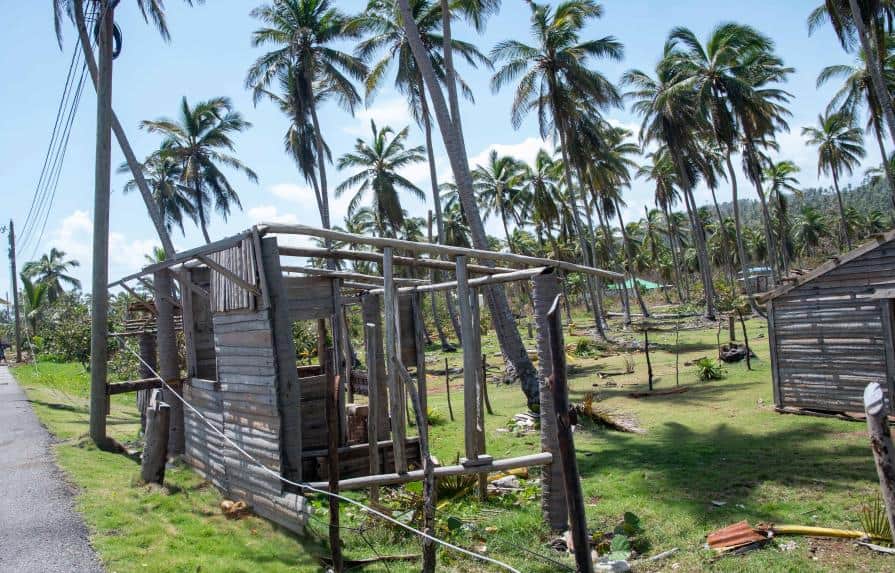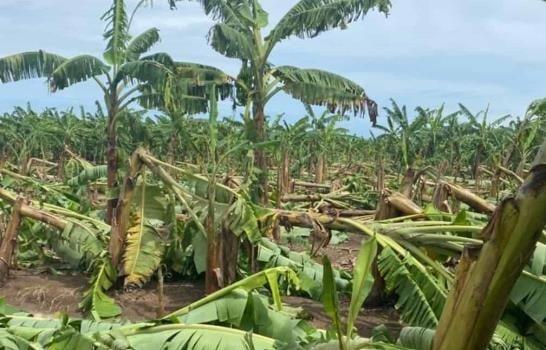So far, it is not possible to speak of a shortage of agricultural products in the Dominican Republic as a result of the passage of Hurricane Fiona, but in the areas that were affected by the phenomenon, important articles of the basic basket.
“The East is very important in agricultural matters for some sectorsFor example, regarding cocoa, the east and northeast, including Monte Plata, La Altagracia, El Seibo, Hato Mayor, Nagua and San Francisco de Macorís, is the country’s most important cocoa basin,” said executive director of the Special Fund for Agricultural Development (FEDA), Hecmilio Galvan. “Obviously, San Francisco was not the most affected, but Bajo Yuna was, but there are great losses of cocoa.”
He added that in that designated area there is about 80% of the cocoa which is produced in the Dominican Republic. In addition, he said that in terms of rice there is also great damage in the María Trinidad Sánchez province, as well as in La Altagracia and Hato Mayor, including Sabana de la Mar.
“There is great damage there, between all of them there could be about 15 or 16 percent of the rice production of the country in that area. Above all, in Nagua there is more ricebecause there are about 12 percent in the eastern part of the country,” he said.
He pointed out that, in terms of coconut, 90% of the national production is produced in the affected area and this was severely damaged. He explained that about 15% of the national production of bananas belongs to the affected area.
In addition, between 5 and 10% of the national production of yucca It is also harvested in the area affected by Hurricane Fiona.
Also, the east is the main sugarcane area of the country and about 90% of the national production of passion fruit, ginger, yam and yautia.

“There are sectors that are going to suffer and, obviously, cattle ranching has also suffered, not as much as the other sectors for obvious reasons, but it has. Refering to cattle raisingthe east and the northeast should represent 40 percent of the cattle raising from the country. It is then completed by the area of Puerto Plata, the south and the Northwest Line, and in Central Cibao, something, but the east has a lot of cattle raisingespecially meat”, explained the director of the FEDA.
“We, as a government, are working on plans to support these sectors”assured.
Extension to pay debts
According to Eric RiveroAgricultural Advisor to the Executive Power, the Dominican Government will give producers affected by Hurricane Fiona an extension to repay their loans and, also, they will be provided with more resources so that they can rebuild and relaunch their production.
“Livestock, which is the main activity of the agricultural sector in the east, has been greatly affected in terms of facilities, basically all wires and accesses. There have really been too many farms that have been affected, but the Government is already responding, and little by little we will return to normality”, Rivero said.
He said that President Luis Abinader announced that they are going to give deadlines for debt payments and will inject new resources to those who need to reactivate activities.
“The debt to producers is going to be extended for up to seven years and zero-rate credit will be provided to those affected. Despite having credits, they will be provided with more resources so that they can repair and relaunch their production,” the official emphasized.
milk production
Rivero, who is also president of the Dominican Association of Milk Producers (Aproleche), said that about 350,000 liters of milk come out of the affected area daily, but that not everything is compromised, because “the rapid intervention of the authorities” has allowed to enable the highways and some neighborhood roads so that the production can leave.
“The first days of the storm yes, there were problems. Only in Hato Mayor in the first two days they stopped producing about 10 million pesos because of what happened (the hurricane), but now, thank God, little by little the wheel of production is being put together again and the Collection centers that were unable to receive milk for two or three days, because it could not arrive, are already beginning to become more dynamic,” he explained.
He pointed out that there are ranchers who have lost many millions of pesos in stockades and facilities on their farms.
“These are situations that we know we are going to recover, because that is the spirit of the producer, of always moving forward,” he emphasized.
Agriculture was one of the sectors most affected by the passage of Hurricane Fiona last Monday through the Dominican Republic. It left important losses in the crops of various items.
Impact on cattle raising
“This is all in disarray, all the fences are on the ground, the cattle are still all loose. All the houses of the employees, the milking sheds, went down. The one that had chicken manure to feed the cattle got wet, the food deposits got wet and went to the ground,” said the livestock producer, Rafael –Chago- De la Cruz, president of the Provincial Council of the Dominican Agribusiness Board (JAD) in El Seiba.
He assures that, “if God does not put his hand in”, they could go bankrupt.
“Seven milking calves died on me because the bower above them fell. There are other ranchers who lost between two, three and four animals. There are others who have lost 10 or 12 animals; A lot of animals have been lost, the losses exceed 50 heads of animals”, he estimated.
De la Cruz pointed to Free Journal that there are producers who have not yet been able to reach their farms in vehicles and the employees have entered through other routes, through foreign farms.
“The eastern part of the country is practically the number one livestock area in the country. Here El Seibo, Higüey and Hato Mayor are totally hatero provinces, they are large farms that have very good cattle raising and there is cattle raising meat and milk”, he said.
De la Cruz gave as an example that a single person was affected by a farm with almost 1,000 plantations planted with bananas. “And everything went down. Cacao also went down, cassava, rice in Miches, that was something out of the ordinary. That is, the hurricane hit this area hard,” he said.








